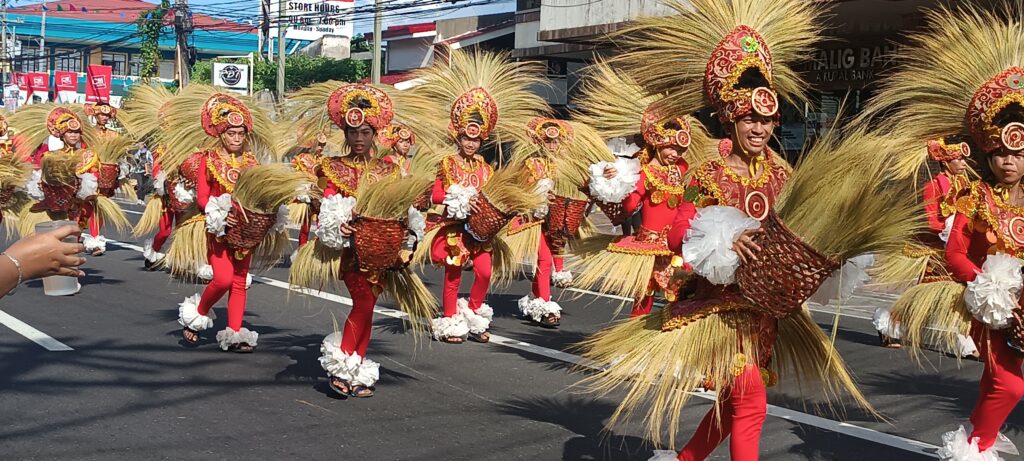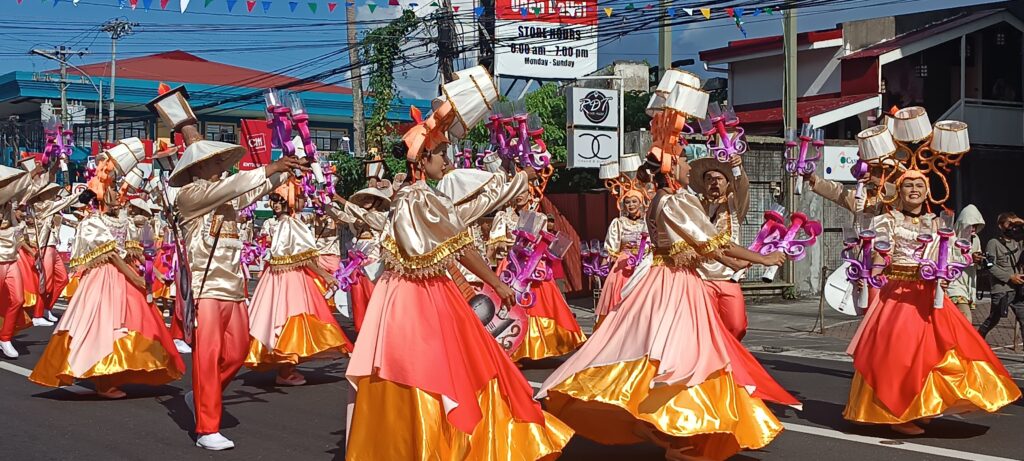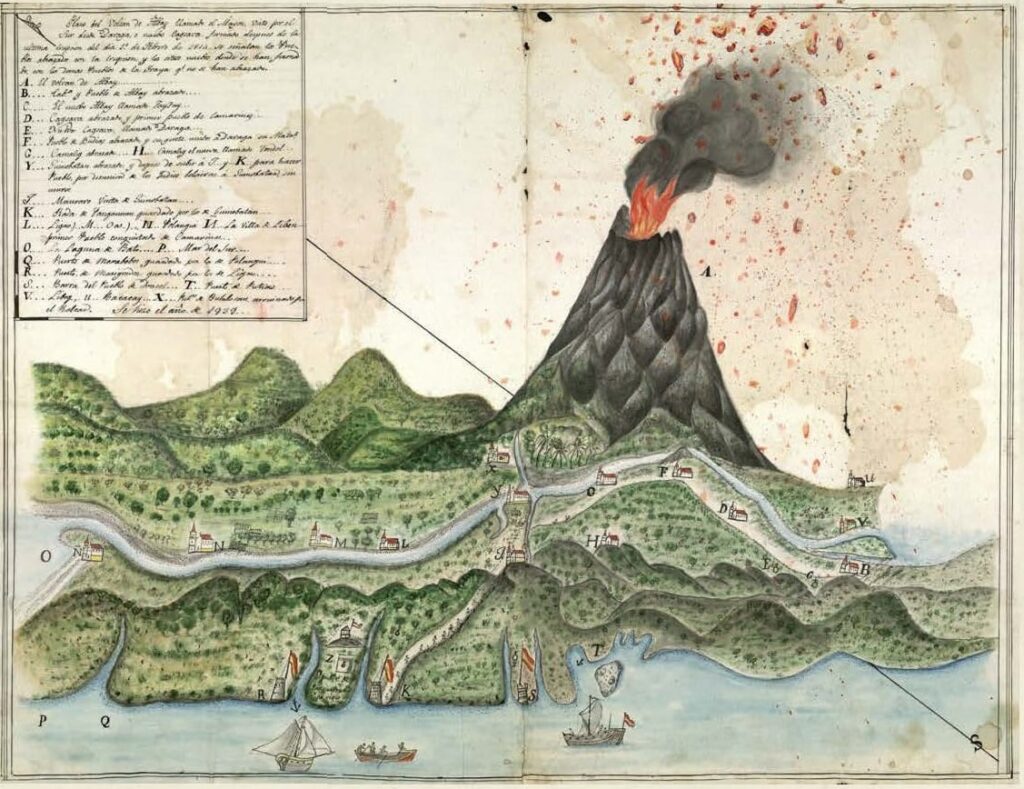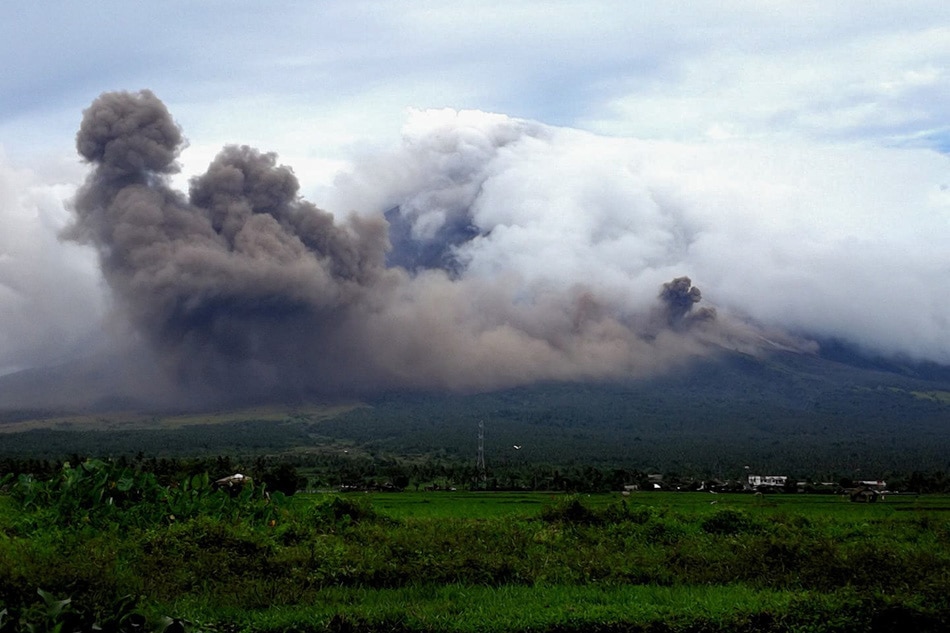A Tale of Love, Destruction and Beauty
Exploring the Mythology of Mt. Mayon and the Magayon Festival

Nestled in the fertile plains in the scenic province of Albay in the Bikol peninsula, lies the majestic Mt. Mayon. Rising at 2462 meters, this active stratovolcano is known for its beauty and perfect conical shape. The landscape surrounding Mt. Mayon has played a significant role in the local communities by providing them a source of livelihood. Due to the rich, volcanic soil that dominates the land, agriculture has become one of the leading sources of income. Taro, coconut, rice, sugar and abaca are some of the major crops grown in the region.
As one admires Mt. Mayon from a distance or sees it in a photograph, one can’t help but be in awe of both its beauty and power. It has long held a place in the hearts of the people of Ibalon, the ancient name for the Bikol peninsula, having great importance in its history and culture. But what makes Mt. Mayon an icon of Bikol?

History of Mt. Mayon
Throughout history, Mt. Mayon has erupted multiple times, leaving a mark on the surrounding areas. Its eruptions have ranged from minor explosions to catastrophic events, resulting in loss of lives, property damage and significant changes to the landscape. Being the most active volcano in the Philippines, it has had a total of 52 recorded eruptions since 1616, according to the Philippine Institute of Volcanology and Seismology (PHIVOLCS). The deadliest and largest eruption happened in the year 1814, when around 12,000 people died. In its wake, it buried the town of Cagsawa under volcanic debris and eventually left behind the iconic Cagsawa Ruins, a remnant of the town’s church left standing as a solemn reminder of the volcano’s mighty power. The last eruption was in 2018, from Jan. 13 to March 18, which captivated onlookers and the world as it made headlines. However, despite the frequent volcanic eruptions, her beauty remains, and people have learned to adapt and live alongside the volcano in harmony.
(NOTE: At the time of publication, this has changed since the author originally wrote the article. On June 8, Phivolcs put Mt. Mayon under Alert Level 3, as a few days prior volcanic activity could be seen. As of publication, lava continues to flow as ash and smoke continue to rise from the volcano. We pray for the safety of all those in the area. If you live in close proximity to Mt. Mayon, please follow warnings of evacuations.)

The Battle Between Two Volcanoes
Mt. Mayon has always been regarded as a sacred site and has been central to the mythology and folklore of the people of Bikol. One such myth is that of the Bikolano god of destruction, Kalaon, who lived in the bowels of Mt. Mayon and who was said to bring his wrath of lightning and rain to the region.
Another, more well-known myth involves Gugurang, the supreme god of the Bikolano, and Asuang, oftentimes recounted as the brother of Gugurang. The story of Gugurang and Asuang can be found in an account dated to 1931, called “A Collection of Bikol folktales from Bacacay, Albay” by Hilarion Vibal. Both gods were originally friends or brothers, who lived separately in their respective mountains. Gugurang lived inside Mt. Mayon and Asuang lived inside Mt. Malinao. Gugurang, being the chief deity of the people of Bikol, was looked to for protection. Whenever the people disobeyed his orders or wishes, he would cause the pit of Mt. Mayon to rumble. In time, the people saw this as a warning from Gugurang and adjusted their ways, so as not to feel the wrath of the god. If their actions were unforgivable, Gugurang in anger would cause Mt. Mayon to erupt. Whenever people saw fire flow out from the crater of Mt. Mayon, they became scared. In an effort to calm Gugurang’s wrath, they would hold an atang, or ritual food offering, to appease him. They would have the baliana, or priestess, conduct the ritual ceremony.
Meanwhile, his brother Asuang did not have any fire to control in his abode in Mt. Malinao. In jealousy, he envied Gugurang having possession of the sacred fire of Mt. Mayon. One day, he asked Gugurang if he could have some of the fire given to him, but Gugurang refused. The two gods quarreled, Asuang threatening to steal the sacred fire and Gugurang swearing to cut Mt. Malinao in half if his brother tried. Soon the gods declared war against each other and became enemies. Asuang gathered all the evil spirits, whom he then sent to earth to corrupt and turn the people to commit evil acts. In the wake of this chaos among the people, Gugurang sent pestilences to their communities and requested another atang, warning them to follow him and not Asuang. If not, he would sweep away their villages in floods or cause the mountain to erupt. Fearing that Asuang might steal the sacred fire, Gugurang assigned his katambang, spirit helpers, to guard it. He refused to give the fire to Asuang, fearing that if his brother did get it, the whole world would then be consumed in flames.
Despite this, Asuang managed to sneak into Mt. Mayon and locate the sacred fire. After many attempts, he finally tempted and bribed the guards with gold. With the sacred fire now in his possession, Asuang put it inside a coconut shell and fled. Soon, cries were heard in the bowels of Mt. Mayon and its insides turned black, and the land and villages were on fire. In fury, Gugurang cried out Asuang’s name and flew to stop him. As Asuang was about to descend on Mt. Malinao, Gugurang snatched the fire from the coconut shell and then vanished. Returning to Mt. Mayon, the god returned the sacred fire back home to its rightful place and the light began to shine inside the volcano once more. With the land still in flames, Gugurang made it rain until the fire was put out. In joy, the people offered more atang and celebrated Gugurang’s victory, and as punishment for Asuang’s actions, Gugurang sent his thunderbolt to Mt. Malinao, cracking it in two.
While this myth is more commonly known, there is actually another myth involving the two volcanoes that is rarely discussed. In a myth recounted by Venacio Prietoziga in 1930, the two volcanoes were seen as female and Mt. Malinao originally had the sacred fire. Mt. Mayon, on the other hand, was just a mountain and had no fire or smoke. She was often barren of vegetation, resorting to borrowing from her neighbors, Mt. Malinao and Mt. Isarog. Malinao, though annoyed with Mayon, was still hospitable and tried her best to help her. Mayon, with greed, took advantage of Malinao’s good nature and soon took whatever she wanted.
One day, Mayon unexpectedly received visitors and had to prepare food for them. Unfortunately, there was no fire and in haste she went to Malinao to ask for some. Tired of Mayon and her antics, Malinao refused to give her a share of the sacred fire. Furious, Mayon became impulsive and hated Malinao for refusing her. As Malinao began to weave a piece of cloth, Mayon saw a big bolo knife beside her. After continuously asking Malinao to give her the sacred fire, Mayon tried to grab and steal it. Failing in her attempt, Malinao managed to keep the sacred fire away from her. In anger and desperation, Mayon then grabbed the bolo, closed her eyes, and struck Malinao, successfully beheading her. Frightened, Mayon ran back to her home, taking the sacred fire with her and attended to her guests. From this point on, Mt. Mayon held the sacred fire, while Mt. Malinao became only a mountain with a split peak.

The Lovers of Mt. Mayon
One of the most famous myths surrounding the volcano focuses on a tragic love story: Bikol’s own Romeo and Juliet. The myth is called “Daragang Magayon” (Beautiful Maiden), and according to local folklore, Magayon was a maiden of unparalleled beauty who captivated the hearts of all who beheld her. While there is no historical text or documents that have the myth recorded, the myth itself is heavily ingrained in the culture and history of the Bikolano people. For context on the telling of the myth, we will look at an account written by Damiana Eugenio, a renowned author and professor who was titled the Mother of Philippine Folklore in 1986.
In the myth, Daragang Magayon was the only daughter of Datu Makusog, the chief of Rawis. His wife, Dawani, died in childbirth and he was left to take care of their only daughter. As the years went by and Daragang Magayon grew older, her beauty and kindness became well known. As she came of age, many suitors from different tribes and towns were captivated by rumors of her and traveled far and wide to try and win Daragang Magayon’s heart. However, none of those men were successful in drawing an interest from Magayon. Not even Pagtuga, the handsome and proud hunter and Datu of Iraga. Among the many gifts of gold, pearls and other treasures offered to Magayon and her father, she turned them away, rejecting his affections.
One day, a curious young man named Panganoron/Ulap, the son of Datu Karilaya of Katagalugan (Tagalog), journeyed far from home just to get a glimpse of Daragang Magayon after hearing of her beauty. He was a quiet but courageous young man, who only wanted to see Magayon and discover if the rumors were true. He eventually caught glimpses of her from afar, while she paddled in the Yawa River. One rainy night, Magayon went to the Yawa River again and the kind Panganoron happened to see her once more. Suddenly, as she was wading through the river, her foot slipped on a rock and she fell into the cold waters. Panganoron immediately sprung into action and raced to the river to save her. Grabbing hold of Magayon, he helped bring her to the shore to safety. As Magayon went to thank her savior, their eyes met and thus started the beginning of their love.
After that initial meeting, the two lovers would continue to meet each other. One day, Panganoron brought Magayon home, whereupon arriving at Datu Makusog’s house, he threw a spear to the stairs of the house with all his might and courage — a precolonial custom that signified his desire to marry. After the declaration of marriage, Magayon blushed, stifled a laugh and shyly looked away. Datu Makusog, upon seeing her happy reaction, knew that his beloved only daughter was in love with this young man. And so, the Datu accepted the marriage proposal and they began to make plans for a wedding in a month’s time. Panganoron, overjoyed, began to make his way back home to deliver the wonderful news to his people and bring them to Rawis for the wedding celebration.
News of the wedding soon spread and eventually reached the ears of Pagtuga, who fumed red with anger that the beautiful Magayon was marrying someone other than him. One day, as Datu Makusog went out to hunt, Pagtuga ambushed and captured him. He then sent a message to Magayon, threatening that he would kill her father and start a war if she did not marry him. Scared for her father’s and people’s safety, and with no Panganoron in sight, she agreed to marry him against her will. In triumph, Pagtuga immediately started to prepare their wedding.
News spread fast, and Panganoron soon learned of what happened. With his bravest warriors, he hurried back to Rawis to stop the wedding and save Magayon, her father and their people. As he arrived, the wedding ceremony was just beginning and a bloody war broke out between Panganoron and Pagtuga. The sky was filled with arrows and the air rang with the sound of swords clashing. Panganoron and Pagtuga began to fight one another, battling for the hand of the beautiful Magayon, until Panganoron slashed Pagtuga, killing him. Magayon, who was hiding in wait, saw that their fight was over and, overjoyed, rushed to Panganoron’s embrace. Sadly, however, as the young woman ran to her love, a stray arrow hit her in the back and she collapsed into Panganoron’s arms. As he held her, one of Pagtuga’s warriors, Linog, stabbed Panganoron in the back with a spear and killed him.

Datu Makusog, seeing the two lovers slain in an embrace, cried out and killed Linog with his minasbad, a type of sharp bolo. Soon, all the warriors fell silent and the war stopped. Instead of a joyous wedding celebration, cries and wails of mourning for the dead echoed in the air. Distraught with the loss of his beloved daughter, tears formed in Datu Makusog’s eyes as he began to dig a grave for the two lovers. Once ready, he tenderly buried them together, side by side, their arms hugging each other in an embrace, just as they had when they died.
Days passed, but the people soon noticed that the land where the two lovers were buried gradually rose higher and higher. A shaking of the earth, muffled rumblings, and red-hot, burning rocks burst into the air from its peak as a mighty volcano formed. Elders believe that whenever an earthquake or eruption happens, it’s Pagtuga in anger who causes it, wanting back the treasures he gave to Magayon, which were buried with her.
On days when clouds cover the tip of the volcano, the elders say that it’s Panganoron kissing Magayon and when it gently rains down the slopes of the volcano, it is Panganoron shedding his tears. Over time and generations, Magayon’s name was shortened to Mayong, then Mayon, and the majestic volcano was named after her.
During the most recent eruption in 2018, a peculiar event happened within the clouds above Mt. Mayon that made headlines. On Jan. 17, 2018, as ash clouds formed in the sky above the volcano, a photojournalist, Ciriaco Santiago III, was taking photos of the scene from a vantage point in Barangay Tagaytay, Camalig, Albay. He posted the photo and it went viral as many saw in the clouds an image of what looked to be two people embracing one another like lovers. The photo captivated locals and Filipinos around the world, with many commenting and believing that it was Daragang Magayon and Panganoron making their presence known as they awakened from their slumber. The photo eventually inspired artist Kerby Rosanes to create an illustration depicting the lovers within the same photo.
The Magayon Festival
Over time, the people of Albay and Bikol have developed local myths and beliefs regarding Mt. Mayon, even having several festivals in honor of it. One of them is the month-long Magayon Festival, held every year in May. Locals celebrate the rich cultural heritage of the people of Bikol and honor the folklore of Mt. Mayon, with Daragang Magayon and her lover, Panganoron.
The Magayon Festival is named after Daragang Magayon herself, and all through May, a schedule of events is planned throughout Bikol. They include a plethora of activities and events that showcase the unique cultural heritage and talents of Bikolanos, including the Magayon Drum & Lyre Corps Parade and Competition, and the Miss Magayon Beauty Pageant. Parades feature people dressed up in traditional clothing and vibrant costumes as they make their way down the streets. A variety of musical instruments are played as songs fill the air and people dance. Art exhibits and cultural showcases provide glimpses into the diverse artistic expressions that abound in the region. Additionally, culinary events and food fairs present the flavorsome Bikolano cuisine.
Now, how did the festival start? Was it a precolonial festival? Well, no, not quite. The festival itself is a fairly recent development and was originally created to not only enrich people with the history and culture of Albay, but also to bring tourism to the region. On Dec. 16, 1998 the 23rd Governor of Albay, Al Francis C. Bichara, signed Proclamation No. 6, declaring the Magayon Festival to be an annual celebratory event. Since then, it has driven tourism to the area and brought joy to the people of Albay.
A Legacy
Mt. Mayon is not just a geographical wonder to behold. It is steeped in myths and lore that have been passed down through generations. From the destructive battle between the gods, Gugurang and Asuang, to the tale of love and sacrifice of Daragang Magayon and Panganoron, these myths have been ingrained into the culture of the people of Bikol, of Ibalon. The myths and beliefs of Mt. Mayon even reached nearby islands such as their neighbors in the Bisayas. The 1637 Hiligaynon and Panay dictionary by Alonso de Mentrida includes an entry that lists the goddess of Mt. Mayon as Mayong, signifying that the Illongo and other ethnic groups in the island of Panay possibly knew of the tale of Daragang Magayon and saw her as a goddess.
Besides the myths, certain beliefs and practices were developed by the Bikolano people in kwentong bayan, or community stories. They have been passed down through the generations to help predict when an eruption would occur — methods and lessons learned over time to help save lives in the event of another disaster. One such method and belief is in the ominous appearance of an old lady asking for water prior to an eruption. This would happen when water sources on the mountain and in nearby areas dry up before an eruption occurs, and has been learned from experience. The elders living around Mt. Mayon know that if the water sources at an 8 km distance dry up during the rainy season, the volcano is preparing to erupt.
As another year passes with the celebration of the Magayon Festival, we continue to celebrate the rich mythology and culture of Albay, Bikol. May it continue to bring joy and a sense of pride to the Bikolano people, as the stories of Mt. Mayon continue to survive and thrive.
Cited Sources:
- Jefferson Chua, “The Mixed Heritage Values of Mount Mayon Natural Park: A Case Study on Harnessing a People-Centered Approach to Nature-Culture Linkages Conservation in a MultiHazard Context,” Ateneo, January 1, 2019, https://www.academia.edu/64005829/The_Mixed_Heritage_Values_of_Mount_Mayon_Natural_Park_A_Case_Study_on_Harnessing_a_People_Centered_Approach_to_Nature_Culture_Linkages_Conservation_in_a_MultiHazard_Context?auto=download.
- Lucita Cachuela, “Kalaon, The God of destruction,” NLP Digital Collection, September 3, 1931, https://nlpdl.nlp.gov.ph/OB01/NLPOBMN0002002067/bs/datejpg.htm.
- Hilarion Vibal, “A Collection of Bikol folktales from Bacacay, Albay,” NLP Digital Collection, September 27, 1931, https://nlpdl.nlp.gov.ph/OB01/NLPOBMN0002002068/bs/datejpg.htm.
- Venacio Prietoziga , “Folktales From Albay Province,” NLP Digital Collection, January 1, 1930, https://nlpdl.nlp.gov.ph/OB01/NLPOBMN0002002061/bs/datejpg.htm.
- “Ang Alamat Ni Daragang Magayon Ni Damiana Eugenio | Philippine Literature,” n.d., http://www.thephilippineliterature.com/ang-alamat-ni-daragang-magayon/
- Ivy Jean Vibar, ABS-CBN News, “Photo of Mayon Volcano Sparks Romance in Social Media Users’ Hearts,” ABS-CBN News, January 18, 2018, https://news.abs-cbn.com/life/01/18/18/photo-of-mayon-volcano-sparks-romance-in-social-media-users-hearts.
- “Province of Albay : MAGAYON FESTIVAL 2008 : History,” n.d., https://web.archive.org/web/20080916185029/http://magayonfestival.albay.gov.ph/history_mf.htm.
- Chua, “The Mixed Heritage Values of Mount Mayon Natural Park: A Case Study on Harnessing a People-Centered Approach to Nature-Culture Linkages Conservation in a MultiHazard Context.”
- Greg Bankoff, Christopher G. Newhall, and Alicia Schrikker, “The Charmed Circle: Mobility, Identity and Memory around Mount Mayon (Philippines) and Gunung Awu (Indonesia) Volcanoes,” Human Ecology 49, no. 2 (April 1, 2021): 147–58, https://doi.org/10.1007/s10745-021-00225-0.


